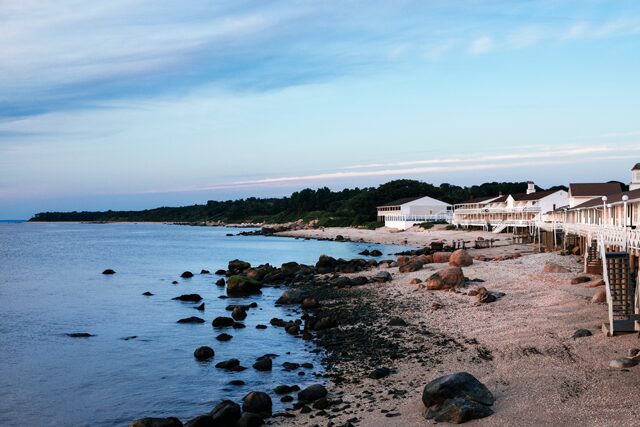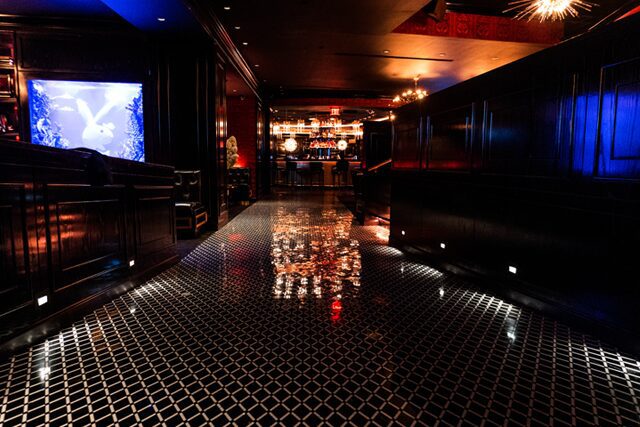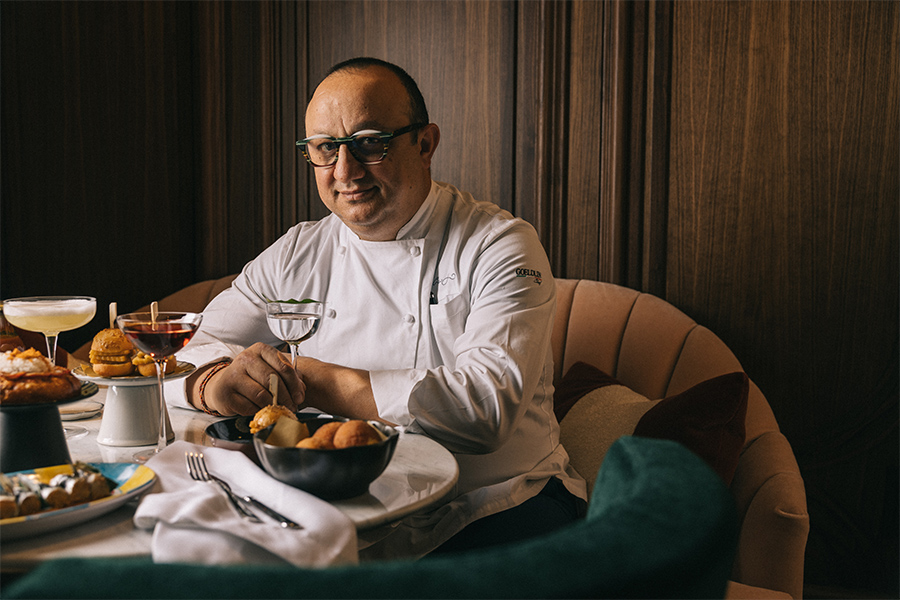Michael Buono started his career as an analyst with global firm KPMG and Booz Allen & Hamilton. This introduction to real estate led him to meeting partner Robert Lavecchia 10 years ago while working on Manhattan’s gamechanging Ace Hotel. Lavecchia, for his part, was working on custom homes in New Jersey, where he honed the skills that have served him so well in hospitality. The Ace project solidified the partnership. “We immediately identified a common work ethic, dedication, and passion—a partnership was the natural step,” says Buono. Since they founded construction management, general contracting, and real estate development firm Mulberry Development in 2007, they’ve worked on such notable properties as Greenport, New York’s Sound View Inn, designed by Brooklyn firm Studio Tack, the Tag Front Architecture Studio-designed Manhattan flagship store for eyewear retailer Dita, and a 6,000-square-foot residential project perched high above New York. Here, COO Lavecchia and CEO Buono discuss their approach to design and Mulberry’s future developments.
How do you implement a customized approach to each project?
Robert Lavecchia:: Through our direct involvement in every aspect of the project, we gain a deep understanding of the space and experience that the client wants to create, and then personally convey that firsthand knowledge to our team of millworkers, artisans, and contractors. Renderings are great, but what sets us apart is our in-house ability to build full-scale prototypes and fine-tune details in real time.
Michael Buono: Within hospitality, the biggest challenge always comes down to balancing the budget with high-touch design and longterm durability without ever compromising the guest experience. We take great pride in our work and sourcing beautiful materials that look just as good on day 1,000 as they did on day one.
What was it like working on the Ace Hotel in Manhattan, your first major project?
MB: I had a firm grasp on the intricacies of the financial side and benefitted greatly from both the mentorship of John Saric, an industry veteran and partner on the project, and the immersive introduction to real estate development and construction. The Ace Hotel touched on all aspects of the process, including historical preservation of the façade and grand interior spaces, and restoration of the turn-of-the-century elements like the lobby floor and ceilings. Through that experience and with each subsequent project, I have developed a profound respect for the role that we play in bridging the past with the present.
What was it like working with Erik Warner of Eagle Point Hotel Partners on the Sound View Inn?
MB: With any restoration project, it is essential to ensure that you honor the architecture and experience that guests associate with the property, and then deliver an elevated version of that. The Sound View project exemplified that; it is an iconic North Fork property with a defined style that guests have visited and returned to year after year for more than six decades. We worked closely with the team to create spaces with touches and details that felt familiar but new and fresh at the same time. Erik is incredibly collaborative, and he became a good friend throughout the process. We’re [currently] working with him on converting one of the freestanding buildings to luxury waterfront condominiums.

You’re also working on the revival of the Playboy Club in New York with a design from Cenk Fikri and creative direction from Richie Notar. How do you plan to bring that brand into the 21st century?
RL: Being a part of the reintroduction of Playboy Club New York is an incredible honor. Attention to detail was paramount with each element reflective of the brand’s heritage. We worked closely with the stakeholders to ensure that every inch of the 14,000-square-foot buildout exudes sophistication, refinement, and luxury. There are so many subtle elements like a grand custom bar that is the focal point of one of the four lounges, a feature wall adorned with custom-crafted gold bunnies, rich walnut woodwork akin to the celebrated mansion, and intricate marble floors that all come together to create an incredible nightlife experience.

Photo by Steven Gomillion
What are the challenges that come with developing the 400-home project in Argentina?
MB: The process is not typical to what we have experienced in the U.S. We are working closely with local representatives and agencies and are adapting our methodology. The venture is exciting. We are taking raw land and creating the complete infrastructure for what will become one of the largest residential developments in Mendoza. True to Mulberry’s guiding principles, our design aesthetic will exemplify respect for local culture, and we will incorporate only the finest materials and handcrafted elements throughout each of the homes. I am originally from the States but spent a number of years of my childhood growing up in Argentina. I am honored to lead this project and introduce the affordable luxury to U.S. purchasers.


